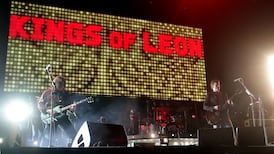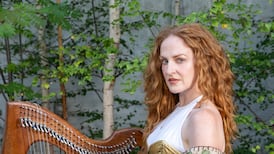Why does the notion of a woman of the year award strike so many people as tedious? A bit worthy? A touch patronising? More than a tad predictable? Are the Women of the Year awards passé or praiseworthy, asks Kathy Sheridan
"Her mother, only 14, left her on the doorstep of a childless couple, he, a railroad . . .", begins the potted biography of another worthy winner in another worthy British WOTY award. No doubt it's a wonderfully inspiring story of triumph over the odds, just unfortunate that it sounds like a parody dreamt up by some sneering man.
The truth about awards is people tend to sneer at them until they get the phone call themselves, after which the gratified pink glow descends. Few refuse.
On Thursday, over a black-tie dinner in the Four Seasons Hotel, the fourth Irish Tatler Women of the Year Awards will be revealed. So far, the overall winners have been the predictable Marys - Robinson, McAleese and Davis. What is it about Marys? It's also notable that two out of the three media award-winners so far have come from broadcasting - Marian Finucane and Anne Doyle - and all have gone to women with desk jobs. Wonderful women of course, but - no offence - perhaps we might hear it for an out-there Lara Marlowe type some time?
The Special Recognition Awards have shown a grittier disposition, acknowledging the heroically-sustained spadework of the likes of Kathryn Synnott, Cathleen O'Neill and Christine Buckley. And the sports awards have thrown high-achieving individuals into the spotlight who were not household names - which, you might imagine, would be the point of it all.
Norah Casey, CEO of Harmonia (formerly Smurfit Communications) and publisher of Irish Tatler, argues that the primary point of the awards is to
provide a range of role models for
young women.
"I want them to look up at these women who had come before them, women who were getting on in years, who had broken the glass ceiling and done it in really difficult times. I want to say to them: 'If those women were able to do it, so can you'."
In year one, says Casey, nominations (submitted by Irish Tatler readers and assessed by a panel of judges chaired by Norma Smurfit) were hugely dominated by names from the voluntary sector.
"There was no end of powerful women involved in the field of charity and social deprivation, an area that men had left behind. But in the public sector, in the professions and in government, management positions and in sport, women were woefully under-represented."
So is she arguing for positive discrimination? Perish the thought, says the woman who joined the Smurfit Group when she was pregnant and became one of only two CEOs there.
"My gender was never an issue. Irish companies do not produce barriers against women but we have to show them that there are paths they can follow. Women should have icons they can look up to, just as there are some pretty powerful male icons in Irish life."
So are women themselves the problem then? She agrees that it is about confidence but also points to the underlying truism that women still have to work much harder than men.
"Soon after I came back to Ireland two and a half years ago, I heard a speech by someone who said that there were not sufficient women available for board appointments. That is so untrue. We had close to 1,000 nominations this year. We still have a long way to go before women are properly represented across the board. Mary Harney said once that it wasn't the fact that she was born a woman that was the problem but that she wasn't born a man."










